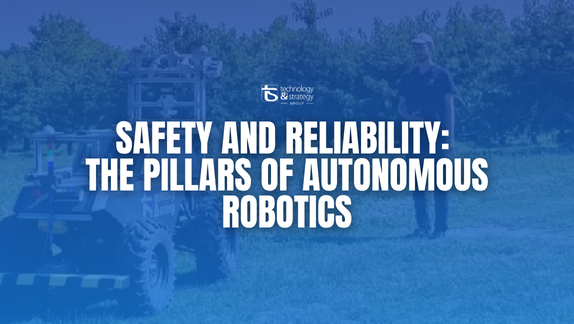For this first episode of our “job of the month” series, we decided to highlight the career of an Embedded Systems Engineer.
Amal and Lyes, two of our consultants, have agreed to share with you their career path and professional situation as embedded systems engineers.
After obtaining her Baccalaureate in experimental sciences, Amal did her preparatory studies in order to join an engineering school. She joined the National Engineering School of Carthage (ENICarthage) in Tunisia and continued her engineering studies in mechatronics engineering, specializing in the development of embedded systems.
Lyes on his side obtains a bachelor’s degree in EEA (electronics, energy, electricity and automation) at the University of Lille, followed by a Master’s degree in computer science and embedded systems at the Sorbonne University in Paris.
Today, both are embedded system engineers at T&S

“An embedded system is a system that consists of a hardware part and a software part. It is an autonomous system, hence the term “embedded”, dedicated to a specific task, often in real-time and generally characterized by its constrained size and limited energy consumption.”
“An Embedded System Engineer works on the development of one or more parts of an Embedded System. It really depends on the size of the team and the project.”


“The work done by an Embedded System Engineer is enormously rich and versatile. It’s a combination of electronics, computer science, but also automation.
His or her missions mainly consist of developing new applications and functionalities for autonomous systems of all kinds: washing machines, autonomous coffee machines, automatic cash dispensers, robots, etc.
Based on the specifications presented by the client or company, the engineer creates the product while complying with the required specifications.
Thus, he or she goes through several phases: a design phase, programming, integration, testing, but also monitoring.”
“There are, indeed, different profiles of Embedded System Engineers. We generally distinguish between hardwares and softwares engineers.
Then we also categorize one or the other. For example, there are low-level software engineers or BSPs (Board Support Package) who do core/OS and driver programming, etc. Others work on middleware or back-end, which are the application layers of the software. There are also front-end engineers who develop HMI (human-machine interface) or GUI (graphical user interface) to manage embedded systems.
For my part, I am currently working on software development (middleware). I mostly do back-end development in C++.”


“Even the field of work of an Embedded Systems Engineer can make a difference. For example, the methodologies and tools used in the automotive field are different from those used in the consumer electronics or aeronautics fields. It’s all very diverse.
Personally, I’m more “Software” than “Hardware” and I mainly do more or less high-level embedded development, using C and C++ programming languages.”

” Willingness and perseverance! To be good at this job, you need to have the will to learn, research and explore. Being autonomous is also very important.
Being an embedded system engineer allows you to evolve in a wide variety of sectors and gives us opportunities to achieve major innovations.”
“You need skills in software development (Algorithms, debugging, etc.) and a good knowledge of development languages that are common in the field of embedded systems such as C/C++, bash, assembler, etc.
But, above all, you must be versatile and autonomous! The technologies we use are constantly evolving, so we must continually train and be up-to-date with these new technologies.

“It all depends on the project. Currently: Eclipse, VI, Virtual Box, Linux, C++, SQL, Bash, etc.”


“I do C/C++ development on a Linux environment. I use Geany as a text editor and GCC to compile my code, the Buildroot tool to generate custom Linux OSes for my targets, GDB to debug my code and recently AWS for IoT since I’m working on an IoT project.”

“I am part of the IoT/CTD (Connectivity Techonologies Development) team made up of another embedded system engineer who does C/C++ development on Linux, our manager who is also an embedded system engineer and our IoT Program Director. We exchange on a daily basis with the ISS team that does the front-end part in java.”
“I am part of a team composed of a project manager, a software architect, back-end and front-end developers, etc.”


“My favorite thing is the problems I encounter on a daily basis! The bugs in the code! The difficulties I have to overcome in a short time, the deadlines!
These are the aspects of the job that stimulate me the most, because they help me to improve, to strengthen myself… All this has made me much stronger and much more efficient in my job.”
“My favourite part of my job is the development and problem-solving part. It’s a real daily challenge that requires you to push yourself to make progress on the project, it’s very satisfying when you get there.”

“The world is tending to become more and more autonomous through the use of embedded systems everywhere and for everyone. Therefore, engineers are needed to develop, optimize and design these systems, regardless of whether they are intended for manufacturing or for everyday use by consumers.”



Discover the winners of the T&S Sponsorship Program 2025. Technology & Strategy supports 7 organizations driving social and environmental impact across Europe.
READ MORE
Discover how autonomous robots developed at Englab’s R&D Center can positively impact the environment and economy through advanced and sustainable technologies.
READ MORE
Discover how Englab's R&D Center ensures the safety and reliability of autonomous robots through advanced technologies and strict protocols.
READ MORE